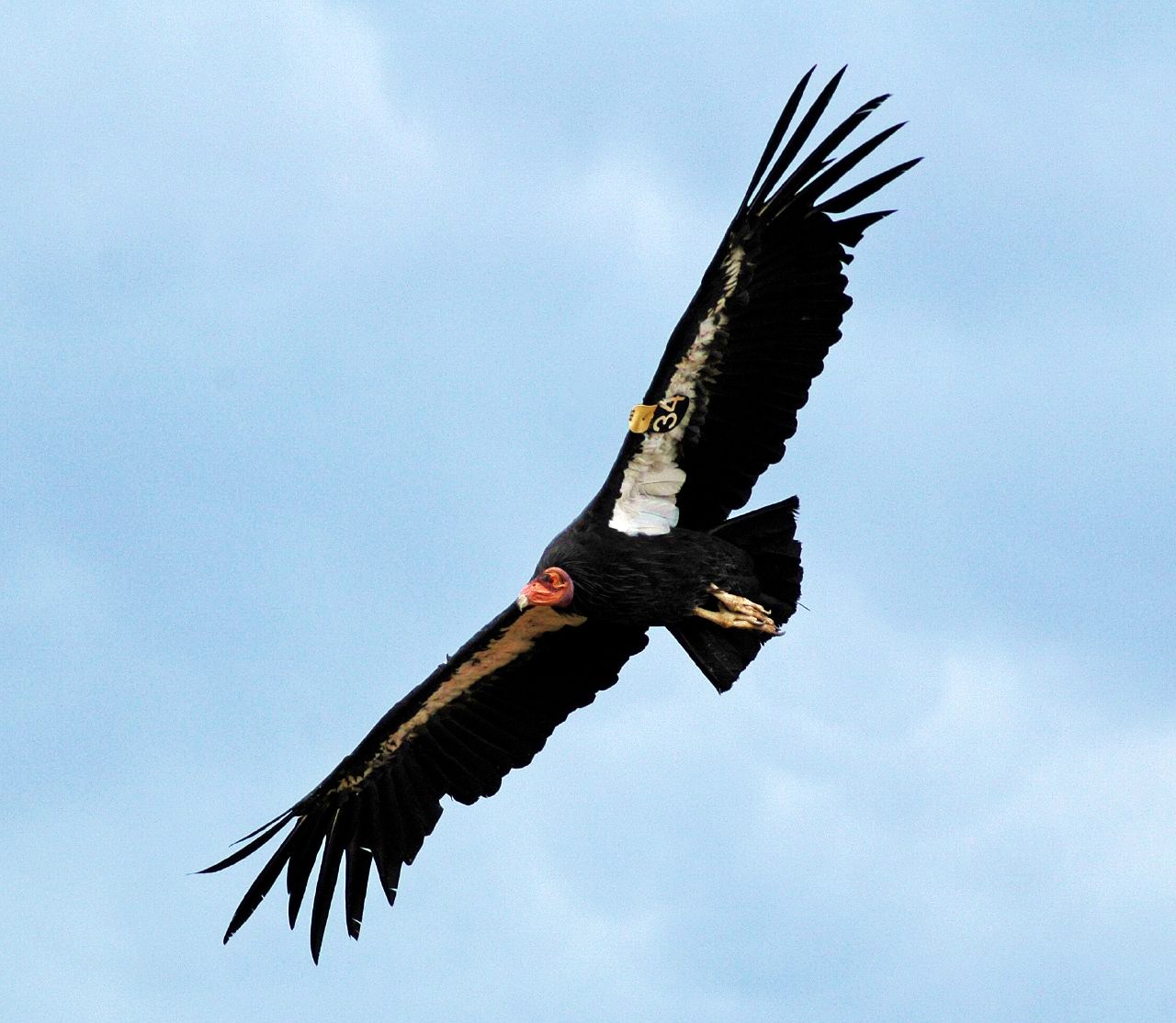Gymnogyps californianus
 |
| Photo by Scott Page (Tree of Life) |
Common name:
California condor (en); condor-da-California (pt); condor de Californie (fr); cóndor de California (es); Kalifornischer kondor (de)
Taxonomy:
Order Falconiformes
Family Cathartidae
Range:
Historically this species was widespread in the south-eastern United States and along the Pacific coast, but it is currently confined to the Grand Canyon area, Zion National Park, and the western coastal mountains of California and northern Baja California, Mexico.
Size:
These huge birds are 117-134 cm long and have a wingspan of 270-290 cm. They weigh 7-14 kg.
Habitat:
The California condor lives in rocky scrubland, coniferous forests, and oak savannas, often being found near cliffs or large trees, which they use as nesting sites.
Diet:
These birds are carrion eaters, primarily consuming large carcasses like goat, cattle, sheep, deer, horse and coyote, although they are also known to eat smaller food, such as rabbit and squirrel.
Breeding:
California condors are monogamous and mate for life. They start nesting in February-April and the pair makes a simple nest in caves or on cliff clefts, especially ones with nearby roosting trees and open spaces for landing. There the female lays 1 bluish-white egg, which is incubated by both parents for 53-60 days. The chicks are fed by both parents and fledge 5-7 months after hatching, but continue to roost and hunt with their parents until they are 2 years old. Typically, a pair only breeds once every 2 years.
Conservation:
IUCN status – CR (Critically Endangered)
This species has a restricted breeding range and a global population of just 44 mature individuals. This species suffered a drastic population decline during the 20th century, mostly attributed to persecution and accidental ingestion of fragments from lead bullets from carcasses, resulting in lead poisoning. In 1987 the species became extinct in the wild when the last 6 wild individuals were captured to join a captive-breeding recovery programme involving 27 birds. The species has since been re-introduced in the wild, currently counting 104 adult individuals, 44 of which are breeding. Publicity and awareness raising campaigns have been largely successful, but a few birds are still being shot. Currently the main threats continues to be the ingestion of lead from carcasses, but also collisions with powers lines.







